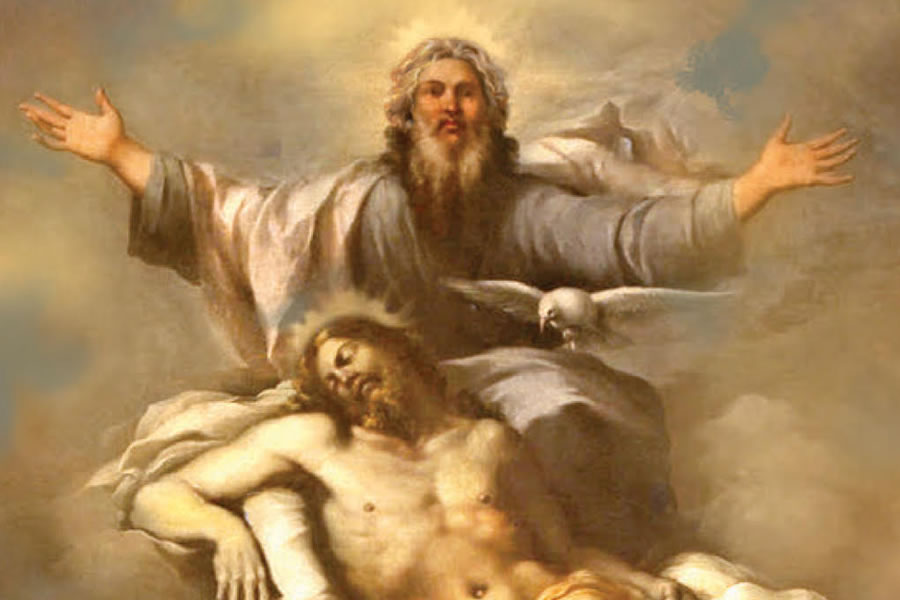
Reflecting Heaven Part 18: One God and Three Persons
08-25-2021Reflecting HeavenFr. Don Kline, V.F.“As on the day of our Baptism, when our whole life was entrusted to the “standard of teaching”, let us embrace the Creed of our life-giving faith. To say the Credo with faith is to enter into communion with God, Father, Son and Holy Spirit, and also with the whole Church which transmits the faith to us and in whose midst we believe: This Creed is the spiritual seal, our heart’s meditation and an ever-present guardian; it is, unquestionably, the treasure of our soul” (Catechism of the Catholic Church, 197)
READ MORE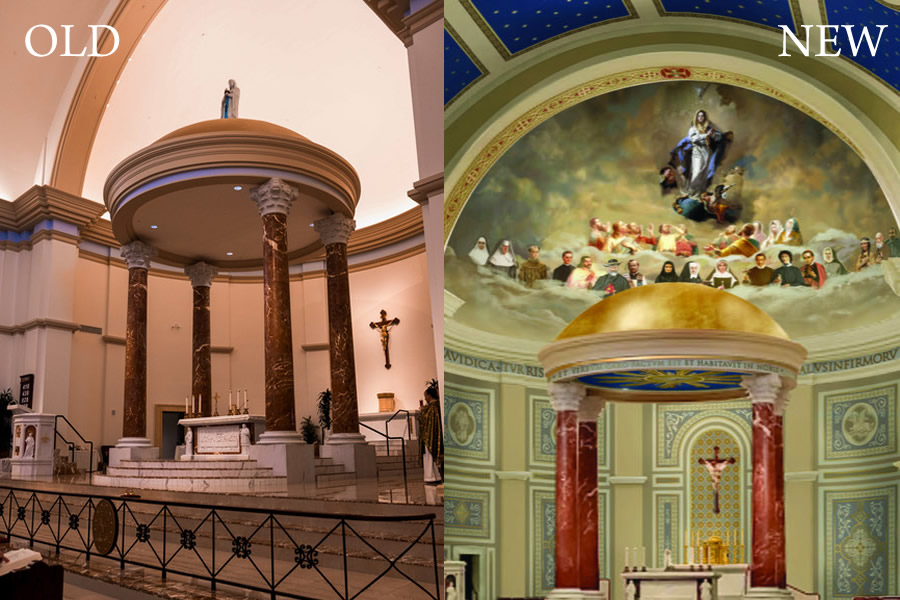
Reflecting Heaven Part 17: Baldachinum of the Altar
08-18-2021Reflecting HeavenFr. Don Kline, V.F.Baldachinum of the Altar, a dome-like canopy above our current altar, has a very long and esteemed history in church sanctuaries. These massive structures can be fashioned out of wood, stone, or metal, and are usually erected over the high altar of larger churches. The baldacchino is usually supported on four columns, though sometimes suspended by chains from the roof.
It has been suggested that the name “baldacchino” comes from Baldocco, Italian form of Bagdad where the precious cloth canopies were made as part of the structure. The same structure was previously called ciborium, from the Greek kiborion (the globular seed-pod of the lotus, used as a drinking-cup) because of the similarity of its dome top to an inverted cup.
READ MORE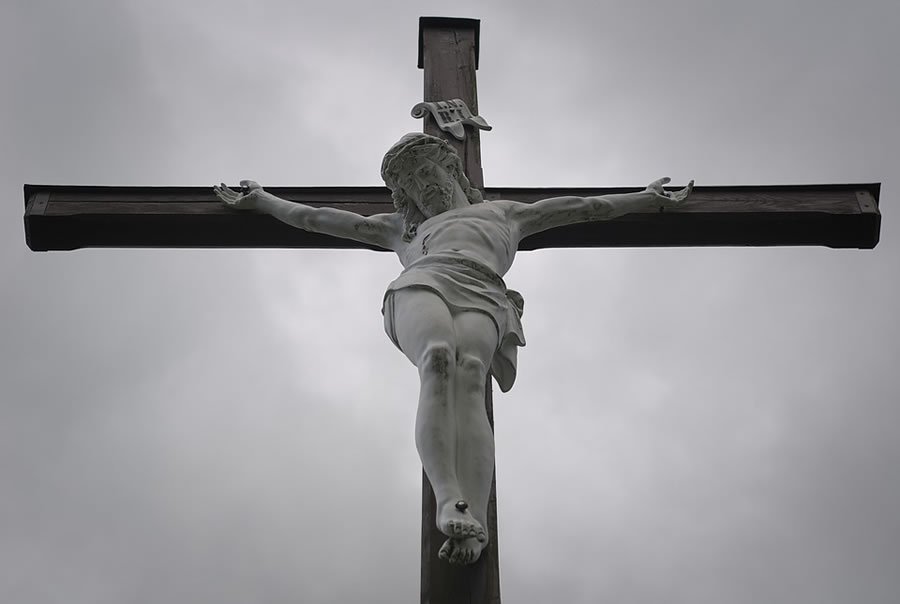
Reflecting Heaven Part 16: The Stations of the Cross
08-11-2021Reflecting HeavenFr. Don Kline, V.F.Each Friday during Lent, many in our parish, and around the world, gather to trace the footsteps of Jesus on his Via Dolorosa (Sorrowful Way), the Way of the Cross, or Via Crucis. I have been deeply moved and inspired at St. Bernadette over the years by all those who have prayed the Stations of the Cross.
READ MORE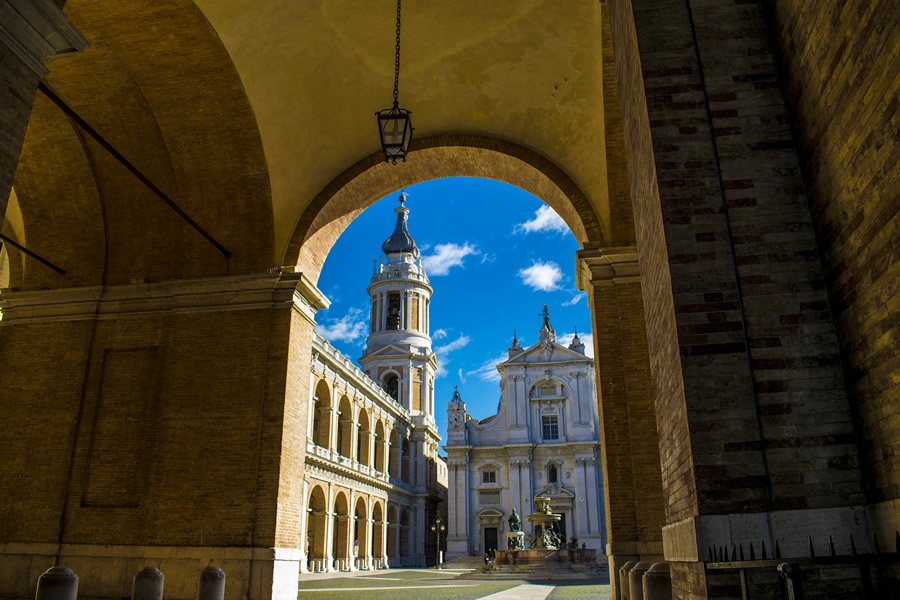
Reflecting Heaven Part 15: Notes on the St. Bernadette Sanctuary Renovation
08-04-2021Reflecting HeavenFr. Don Kline, V.F.Litany of Loreto: This litany to the Blessed Virgin Mary was composed during the Middle Ages. The place of honor it now holds in the life of the Church is due to its faithful use at the shrine of the Holy House at Loreto. It was definitively approved by Pope Sixtus V in 1587, and all other Marian litanies were suppressed, at least for public use. Since then, several Popes have added titles to the Litany, as only they may do.
READ MORE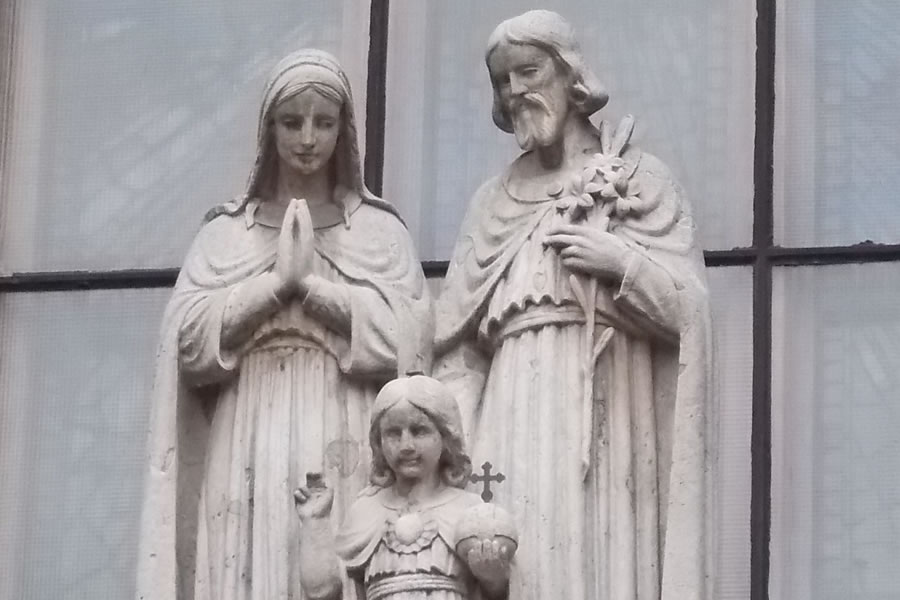
Reflecting Heaven Part 14: Notes on the St. Bernadette Sanctuary Renovation
07-28-2021Reflecting HeavenDeacon Peter AuriemmaThe south transept of St. Bernadette Church is dedicated to St. Joseph. As part of the beautification project of our Church, a large original oil painting has been commissioned for its south wall. It will be a depiction of the Holy Family in their home in Nazareth.
To say that Nazareth was a humble, back-water place is an overstatement. It was a small hamlet of about 150 families and was founded by descendants of the royal family of King David. It is located in northern Galilee approximately 20 miles west of the Sea of Galilee. We can appreciate a bit of Nazareth’s poor reputation by Nathanael’s comment when Philip tells him of Jesus’ hometown. Nathanael replies, “Can anything good come out of Nazareth?” (John 1:46). However, Nazareth was just a little over 3 miles from the large, bustling Greco-Roman city of Sepphoris, one of the capital cities of the Galilee district.
READ MORE
Reflecting Heaven Part 13: Notes on the St. Bernadette Sanctuary Renovation
07-21-2021Reflecting HeavenDeacon Peter AuriemmaApparitions of Our Blessed Mother Mary to St. Bernadette
As part of the beautification project for St. Bernadette Church, a large original oil painting has been commissioned for the north transept. It will be a depiction of one of the apparitions of Our Blessed Mother Mary to St. Bernadette in the grotto of Massabielle on the outskirts of Lourdes. Lourdes is a small town nestled in the foothills of the Pyrenes Mountains in the southeast corner of France.
READ MORE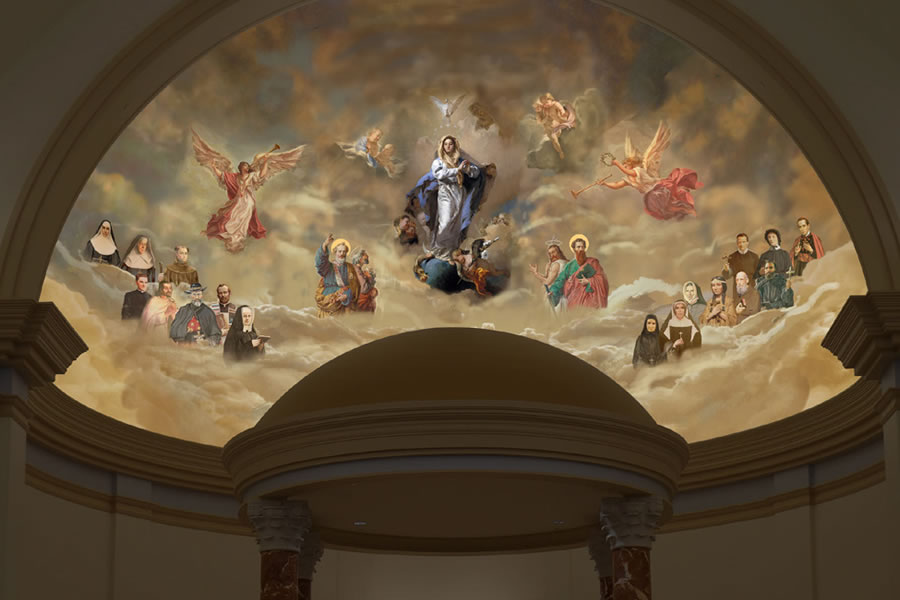
Reflecting Heaven Part 12: Some of the American Saints in the Lower Section Apse (contnued)
07-14-2021Reflecting HeavenFr. Don Kline, V.F.St. Kateri Tekakwitha
Native American and consecrated virgin
Nicknames are generally silly, entertaining names given to people by affectionate relatives or friends. It’s rare to hear an enviable one. But “Lily of the Mohawks?” Now, that’s an elegant nickname. This is the nickname of St. Kateri Tekakwitha. Orphaned at the age of four, she was raised by her uncle, the chief of the Mohawk village. When priests came to the village, Kateri was drawn by their teachings, and converted at the age of 19, heedless of the anger of her relatives. Because she refused to work on Sundays, she was denied meals that day. Finally, a missionary encouraged her to run away to Montreal, Canada, to practice her faith freely. She followed his advice, and lived a life of extreme prayer and penance, taking a vow of virginity. She was beatified in 1980 and canonized on October 21, 2012.
READ MORE
Reflecting Heaven Part 11: Some of the American Saints in the Lower Section Apse
07-07-2021Reflecting HeavenFr. Don Kline, V.F.American Saint, Frances Cabrini once said, “I will go anywhere and do anything in order to communicate the love of Jesus to those who do not know Him or have forgotten Him.” This seemed to be the conviction of all our American saints who founded hospitals, grade schools, churches, universities, leper colonies, orphanages, missionary outposts, soup kitchens and more. In order to remind others of the goodness of God and Christ’s redeeming, so many saints, canonized or not, functioned as building blocks of our country. Catholics, in other words, have played a huge part in American history.
READ MORE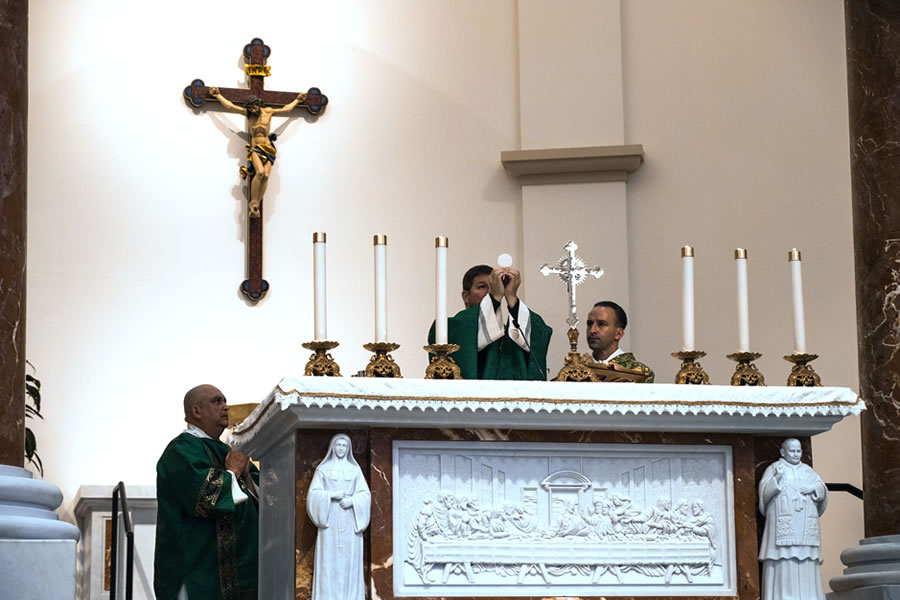
Reflecting Heaven Part 10: The Ambo and the Altar of Sacrifice
06-30-2021Reflecting HeavenFr. Don Kline, V.F.Over the past nine weeks, we’ve been exploring the various aspects of our current renovation project. Ultimately, the purpose of this project is to facilitate a closer relationship for each of us with Jesus Christ and His Church. Perhaps nowhere in the church is that relationship with Christ more clearly expressed than in the Altar of Sacrifice.
Last week we explored the progression of the pilgrimage from Baptism in the font up the center aisle to the Holy of holies, the Sanctuary itself. You will recall that the Sanctuary is the “nerve center” of the church, the focal point at which heaven and earth meet at each and every Mass.
READ MORE
Reflecting Heaven Part 9: The Center Aisle
06-23-2021Reflecting HeavenFr. Don Kline, V.F.This week we turn our attention from the beautiful stained glass windows to the walls and the floor. Back in part 3 of this series, we learned that the nave is the main body of the church apart from the sanctuary. It is the area where the people, the liturgical assembly, sit, kneel, stand, process, listen, sing, and pray at Mass, and where they may come pray in adoration and devotion outside Mass. The word “nave” stems from the same Latin root as “navy” and “navigation,” and it recalls the ancient symbol of the “Ship of the Church” or “Barque of St. Peter,” the vessel that keeps us safe from the waters of chaos as we make our pilgrim way toward heaven.
READ MORE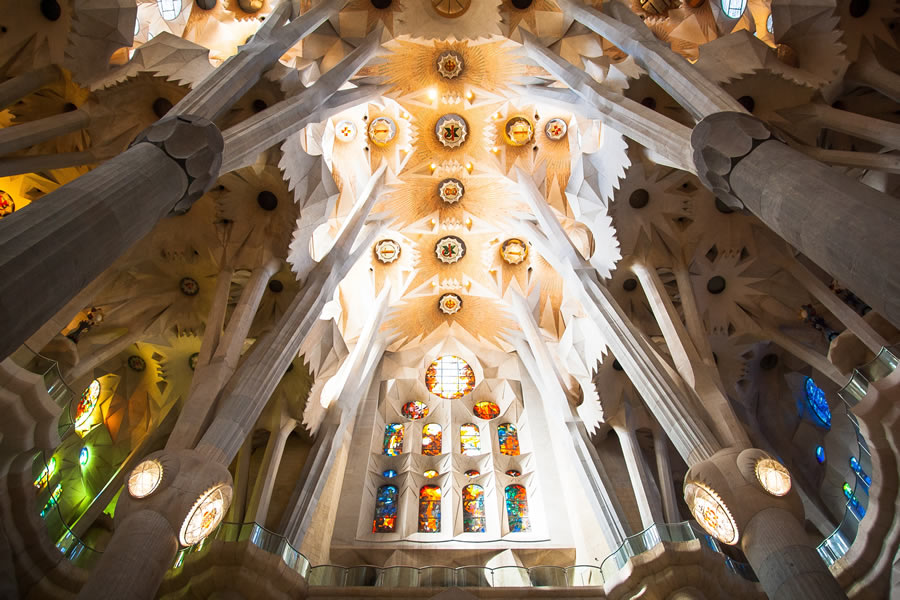
Reflecting Heaven Part 8: Truth and Beauty
06-16-2021Reflecting HeavenFr. Don Kline, V.F.This week we take a short break before we begin our tour through the stained glass windows to recap some of the main points of our parish beautification project.
The main reason our church building, or any Catholic Church building for that matter would have strive to have beautiful architecture, inspiring art and colorful windows, is to enhance what is already happening in the Sacred Liturgy. Our renovation aims to renew our experience of Holy Mass, and leads us to encounter Jesus Christ and His Church through the Liturgy and liturgical art.
READ MORE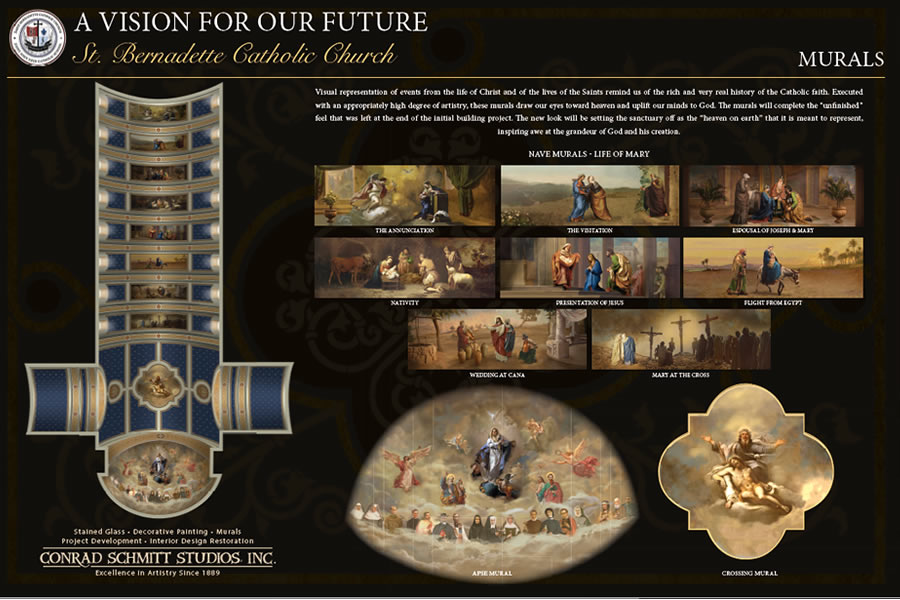
Reflecting Heaven Part 7: Ceiling Murals (continued)
06-09-2021Reflecting HeavenFr. Don Kline, V.F.Last week we looked at the first four of our new murals currently being painted for the ceiling, and we learned that the overall theme of the set of eight murals is finding Jesus through Mary. This is done through eights Biblical scenes from Mary’s life, portrayed in bright, rich color and shape. As with all the murals, they are meant help raise our minds to heaven in all its multicolored splendor, drawing us toward greater union with God and his Church.
READ MORE